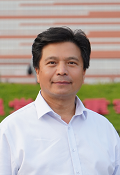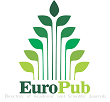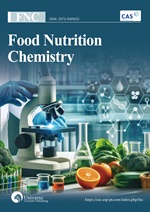Controlled tornadoes could fix climate and energy problems
DOI:
https://doi.org/10.18686/cest232Keywords:
atmospheric vortex engine; convection energy; exergy; clean energyAbstract
Stationary tornadoes will be produced by having warm humid air enter the bottom of a hollow tower tangentially. A large atmospheric vortex engine (AVE) could generate 2 GW of electricity. 2000 AVE’s could provide current world electricity needs. The tower would look like a 200 m high natural draft cooling tower. The vortex is started by heating the air with steam or fuel. Subsequently, the vortex is sustained by warm humid surface air, warm sea water spray, or waste heat. Mechanical energy would be produced by expanding air into the low pressure at the base of the vortex via peripheral turbo-generators located at grade and not by harnessing the kinetic energy of the swirling tornado wind. The intensity and size of the vortex can be controlled because the energy is produced by the expansion of surface air which is in a metastable state. Vortex diameter could be 10 m to 100 m. Vortex height could be up to 15 km. The Singapore Science Center fire whirl producer demonstrates that tangential air entries plus a heat source can produce vortices. The technology needs scaling up. Waterspouts demonstrate that low temperature heat sources can produce stable vortices.

Downloads
Published
How to Cite
Issue
Section
License
Copyright (c) 2024 Louis Marc Michaud

This work is licensed under a Creative Commons Attribution 4.0 International License.
References
1. Kiehl JT, Trenberth KE. Earth's annual global mean energy budget. Bulletin of the American meteorological society. 1997 Feb;78(2):197-208. DOI: https://doi.org/10.1175/1520-0477(1997)078<0197:EAGMEB>2.0.CO;2
2. Smith JM, Van Ness HC, Abbott MM, et al. Introduction to chemical engineering thermodynamics. Available online: https://archive.org/details/introduction-to-chemical-engineering-thermodynamics-eighth-edition-by-j.-m.-smit/page/53/mode/2up (accessed on 8 October 2024).
3. Jordan CL. Mean soundings for the West Indies area. J. Meteo. 1958; 15: 91–97. DOI: https://doi.org/10.1175/1520-0469(1958)015<0091:MSFTWI>2.0.CO;2
4. Marquet P. On the concept of available enthalpy, application to atmospheric energetics. Available online: https://arxiv.org/pdf/1402.4610.pdf (accessed on 8 October 2024).
5. Margules M. Zur Sturmtheorie. Meteorologische Zeitschrift. 1906; 23(11): 481–497.
6. Lorenz EN. Available Potential Energy and the Maintenance of the General Circulation. Tellus. 1955; 7(2): 157–167. doi: 10.3402/tellusa.v7i2.8796 DOI: https://doi.org/10.3402/tellusa.v7i2.8796
7. Lorenz EN. The nature and theory of the general circulation of the atmosphere. World Meteorological Organization; 1967.
8. Rosen MA. Exergy Analysis as a Tool for Addressing Climate Change. European Journal of Sustainable Development Research. 2021; 5(2): em0148. DOI: https://doi.org/10.21601/ejosdr/9346
9. Persing J, Montgomery MT. Is Environmental CAPE Important in the Determination of Maximum Possible Hurricane Intensity? J. Atmos. Sci. 2005; 62: 542–550. doi: 10.1175/JAS-3370.1 DOI: https://doi.org/10.1175/JAS-3370.1
10. Holland GJ. The maximum potential intensity of tropical hurricanes. J. Atmos. Sci. 1997; 54: 2519–2541. DOI: https://doi.org/10.1175/1520-0469(1997)054<2519:TMPIOT>2.0.CO;2
11. Michaud LM. Entrainment and detrainment required to explain updraft properties and work dissipation. Tellus A: Dynamic Meteorology and Oceanography. 1998; 50(3): 283–301. DOI: https://doi.org/10.3402/tellusa.v50i3.14527
12. Bechtold, P. Atmospheric Moist Convection. ECMWF Training; 2019.
13. Zipser EJ, LeMone MA. Cumulonimbus vertical velocity events in GATE. Part Ⅱ: Synthesis and model core structure. J. Atmos. Sci. 1980; 37(11): 2444–2457. DOI: https://doi.org/10.1175/1520-0469(1980)037<2444:CVVEIG>2.0.CO;2
14. Dufour L, Van Mieghem J. Thermodynamics of the Atmosphere (French). Royal Meteorological Institute of Belgium; 1975.
15. Michaud LM. Atmospheric thermodynamic HP48 calculator program—AT1. Available online: http://vortexengine.ca/Calculator.shtml (accessed on 8 October 2024).
16. Williams E, Renno N. An analysis of conditional stability of the tropical atmosphere. Mon. Wea. Rev. 1993; 121: 21–36. DOI: https://doi.org/10.1175/1520-0493(1993)121<0021:AAOTCI>2.0.CO;2
17. Molinari J, Romps DM, Vollaro D, et. al. CAPE in tropical cyclones. J. Atmos. Sci. 2012; 69: 2452–2463. doi: 10.1175/JAS-D-11-0254.1 DOI: https://doi.org/10.1175/JAS-D-11-0254.1
18. Lilly DK. Tornado Dynamics. NCAR; 1969. pp.69–117. DOI: https://doi.org/10.1111/j.1949-8594.1969.tb08417.x
19. Snow JT, Randal L, Pauley. On the Thermodynamic Method for Estimating Maximum Tornado Windspeeds. Journal of Climate and Applied Meteorology. 1984; 23(10): 1465–1468. DOI: https://doi.org/10.1175/0733-3021-23.10.1465
20. Randall DA, Wang J. The moist available energy of a conditionally unstable atmosphere. J. Atmos. Sci. 1992; 49(3): 240–255. DOI: https://doi.org/10.1175/1520-0469(1992)049<0240:TMAEOA>2.0.CO;2
21. Michaud LM. Thermodynamic Cycle of the Atmospheric Upward Heat Convection Process. Meteorol. Atmos. Phys. 2000; 72: 29–46. doi: 10.1007/s007030050003 DOI: https://doi.org/10.1007/s007030050003
22. Goody R. On the mechanical efficiency of deep, tropical convection. Journal of the atmospheric sciences. 2003; 60(22): 2827–2832. DOI: https://doi.org/10.1175/1520-0469(2003)060<2827:OTMEOD>2.0.CO;2
23. Michaud LM. On hurricane energy. Meteorol. Atmos. Phys. 2012; 118: 21–29. doi: 10.1007/s00703-012-0208-6 DOI: https://doi.org/10.1007/s00703-012-0208-6
24. Kleidon A. Physical limits of wind energy within the atmosphere and its use as renewable energy: From the theoretical basis to practical implications. Meteor. Zeitschrif. 2021. DOI: https://doi.org/10.1127/metz/2021/1062
25. Trenberth KE, Stepaniak DP. Covariability of components of poleward atmospheric energy transports on seasonal and inter annual timescales. J. Climate. 2003; 16: 3691–3705. DOI: https://doi.org/10.1175/1520-0442(2003)016<3691:COCOPA>2.0.CO;2
26. Emanuel KA. The theory of hurricanes. Annual Review of Fluid Mechanics. 1991; 23: 179–196. DOI: https://doi.org/10.1146/annurev.fluid.23.1.179
27. Andreas EL, Emanuel KA. Effect of sea spray on tropical cyclone intensity. J. Atmos. Sci. 2001; 58: 3741-3751. DOI: https://doi.org/10.1175/1520-0469(2001)058<3741:EOSSOT>2.0.CO;2
28. Sroka S, Emanuel K. Sensitivity of sea-surface enthalpy and momentum fluxes to sea spray microphysics. Journal of Geophysical Research: Oceans. 2022. doi: 10.1029/2021JC017774 DOI: https://doi.org/10.1029/2021JC017774
29. Montgomery MT, Bell M, Aberson SD, Black M. Hurricane Isabel (2003) Insight of the physics of intense storms. Part Ⅰ. Bull. Amer. Meteor. Soc. 2006; 87: 1335–1347. doi: 10.1175/BAMS-87-10-1335 DOI: https://doi.org/10.1175/BAMS-87-10-1335
30. Aberson SD, Montgomery MT, Bell M, Black M. Hurricane Isabel: New insight into the physics of Intense storms. Part II. Bull. Amer. Meteor. Soc. 2006; 87: 1349–1354. doi: 10.1175/BAMS-87-10-1349 DOI: https://doi.org/10.1175/BAMS-87-10-1349
31. Willoughby HE. Tropical Cyclone Eye Thermodynamics. Mon. Wea. Rev. 1998; 126: 3053–3967. DOI: https://doi.org/10.1175/1520-0493(1998)126<3053:TCET>2.0.CO;2
32. Bister M, Emanuel KA. Dissipative heating and hurricane intensity. Meteorol. Atmos. Phys. 1998; 65: 233–240. DOI: https://doi.org/10.1007/BF01030791
33. Emanuel K. 100 Years of Progress in Tropical Cyclone Research. Meteorological Monographs. 2018; 59: 15.1–15.68. doi: 10.1175/amsmonographs-d-18-0016.1 DOI: https://doi.org/10.1175/AMSMONOGRAPHS-D-18-0016.1
34. Renno NO. A thermodynamically general theory for convective vortices. Tellus. 2008; 60(A): 688–699. DOI: https://doi.org/10.1111/j.1600-0870.2008.00331.x
35. NOAA Hurricane frequently asked questions. Available online: https://www.aoml.noaa.gov/hrd-faq/ (accessed on 1 October 2024).
36. Michaud LM. Proposal for the Use of a Controlled Tornado-like Vortex to Capture the Mechanical Energy Produced in the Atmosphere from Solar Energy. Bull. Amer. Meteor. Soc. 1975; 56(5): 530–534.
37. Michaud LM. The atmospheric vortex engine. In: Proceedings of the 2009 IEEE Toronto International Conference Science and Technology for Humanity (TIC-STH); 26–27 September 2009; Toronto, Canada. pp. 971–975. DOI: https://doi.org/10.1109/TIC-STH.2009.5444355
38. Michaud LM. Vortex process for capturing mechanical energy during upward heat-convection in the atmosphere. Applied Energy. 1999; 62: 241–251. DOI: https://doi.org/10.1016/S0306-2619(99)00013-6
39. Michaud LM. Atmospheric Vortex Engine Description/Story. Available online: http://vortexengine.ca/VSC/Vortex_Story_W.pdf (accessed on 4 October 2024).
40. Michaud LM. Atmospheric vortex engine technical description. Available online: https://vortexengine.ca/VSC/AVE_WEB.pdf (accessed on 4 October 2024).
41. Michaud LM. Atmospheric vortex engine web site. Available online: https://vortexengine.ca (accessed on 8 June 2024).
42. Emanuel K. ODE Magazine article: How to tame a tornado. Available online: ODE-March-2008.pdf (vortexengine.ca) (accessed on 4 October 2024).
43. Kleidon A. Working at the limit: A review of thermodynamics and optimality of the Earth system. Earth System Dynamics. 2023; 14(4): 861–896. doi: 10.5194/esd-14-861-2023 DOI: https://doi.org/10.5194/esd-14-861-2023
44. Bateman TS, Mann ME. The supply of climate leaders must grow. Nature Climate Change. 2016; 6: 1052–1054. DOI: https://doi.org/10.1038/nclimate3166
45. AVEVA Pro/Ⅱ simulation. Available online: https://www.aveva.com/en/products/pro-ii-simulation/ (accessed on 9 October 2024).




.jpg)
.jpg)

